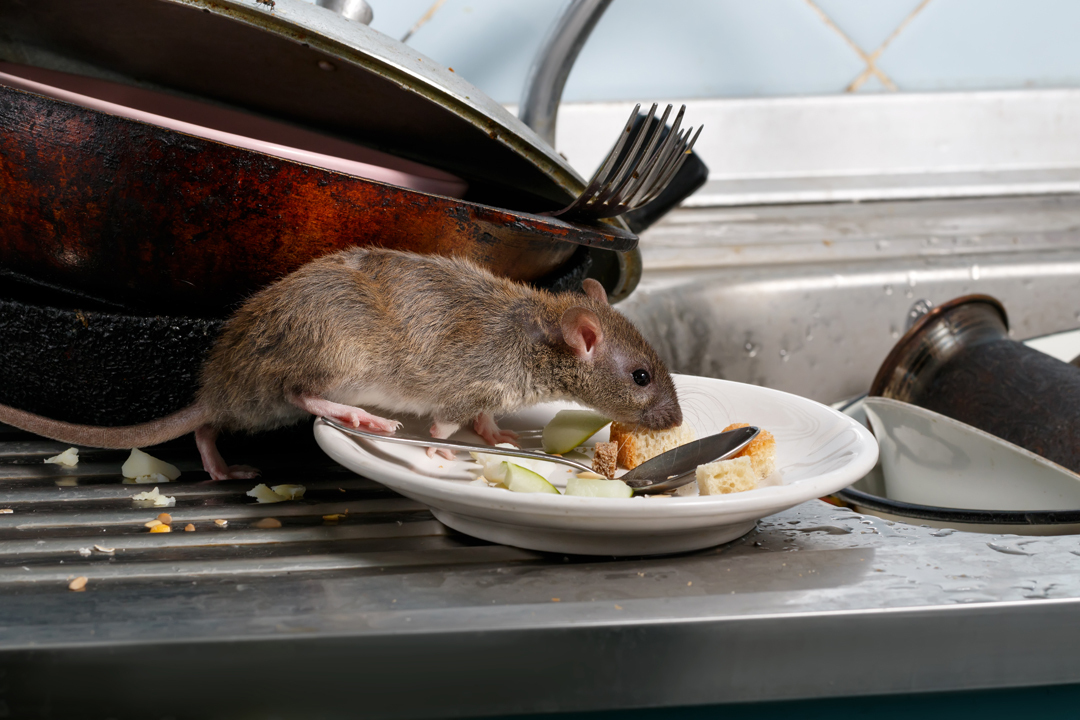Rodents and Appliances

Keep Rodents Out of Appliances
Have you been hearing scurrying, scratching, or even squeaking from your home appliances? Well, there is good news and bad news.
The good news is that appliances generally don’t make animal noises. Bad news, there is a decent chance that you have an uninvited house guest, rodents, setting up shop in your expensive amenities.
The silver lining is that you not only can eliminate the mice or rat problem, but you can take steps to prevent this situation from happening to you. We’ll walk you through the ways of identifying rodent problems, eliminating the pest, and preventing future infestations.
Signs of Rodents in Appliances
Rodents are very good at making themselves scarce, and it can be difficult to catch sight of them out in the open. But just because you don’t see them, it doesn’t mean they’re not in your appliances.
Lucky for you, rodents do leave behind a trail of their activities. And if you keep your eyes, ears, and nose on alert, you can gather clues to figure out if they’re around.
Paths and Movement – Mice and rats dislike being out in the open. They will use cover to get from point A to point B. In a home, they generally make paths along baseboards and behind furnishings. Rats will leave behind a greasy residue along items on their routes. Mice can leave behind footprints in dust or other materials. Both rodents can make gnaw marks on items in their path.
Animal Noises – As mentioned before, noises can be a sign of rodent activity in your appliances. Mice have high-pitched squeaks, while rats can squeak, chirp, and even hiss. However, rats make noise at a higher frequency that’s essentially undetectable by humans. Both will scurry and scratch around when they’re active.
Droppings – Mice and rats have different-sized droppings. Mice leave behind tiny black droppings about 3 to 6 mm in length and rounded on the ends like a grain of rice. Rat scat is a shiny black color and 12 to 19 mm long with pointed ends. Both will leave behind droppings near their nesting sites.
Smell of Urine – Both rodents leave behind a strong urine smell. They do this to establish territory.
Nests – If you begin noticing random scraps of paper, food, or other shredded material piled up in one area, it could be a nest. Mice and rats instinctively collect material for their nests.
Appliance Damage – These rodents love to chew on everything. Unfortunately, that includes wiring. If you notice appliances going haywire, you could get a professional to inspect your appliance for potential pest damage.
Getting Rid of Rodents in an Oven
For rodents, ovens are an ideal place to make a nest. With a potentially endless supply of food crumbs, nice warmth, and out-of-sight spaces, it’s a home sweet home for them. The most common place in an oven for mice or rats to make their nests is in the lower oven drawer. If you find a rodent nest, here are steps you can take to get rid of them.
Buy multiple traps (snap traps, glue traps, etc.) in preparation for eliminating the mice or rats.
Clean out the nest as soon as you can. Rodents will still follow their scent trails back and return to their nesting site. Wear gloves and a face mask when removing nests, and wash hands afterward.
Set up multiple traps along suspect paths, spacing them out 2 to 3 feet apart.
Clean kitchen and other appliances to eliminate food sources.
Try to find and seal up possible entry points around the home.
Place moth balls or cotton balls soaked in peppermint oil around points of entry. Rodents have a heightened sense of smell, and those smells act as a deterrent.
To help reduce the chances of having an infestation, clean your oven and kitchen regularly. Be sure to pull the oven out away from the wall to clean behind the appliance.
Getting Rid of Rodents in a Washer, Dryer, or Dryer Vent
Laundry appliances also act as a haven for rodents. In the case of the washer and dryer, lint and small clothing items can provide perfect nesting material. The dryer vent presents a point of entry into the home and can be a nesting spot.
Buy multiple traps (snap traps, glue traps, etc.) in preparation for eliminating the mice or rats.
Clean out the nest as soon as you can. Rodents will still follow their scent trails back and return to their nesting site. Wear gloves and a face mask when removing nests, and wash hands afterward.
Set up multiple traps along suspect paths inside, spacing them out 2 to 3 feet apart.
Set traps outside near the exterior dryer vent outlet.
Try to find and seal up possible entry points around the home.
Hire a professional to clean out the dryer vent hose line.
Place moth balls or cotton balls soaked in peppermint oil around points of entry. Rodents have a heightened sense of smell, and those smells act as a deterrent.
For preventative measures, be sure to pull the appliances away from the wall to clean behind the washer and dryer.
More helpful pest tips and solutions can be found on Kness.com/Pest-Control-Center.